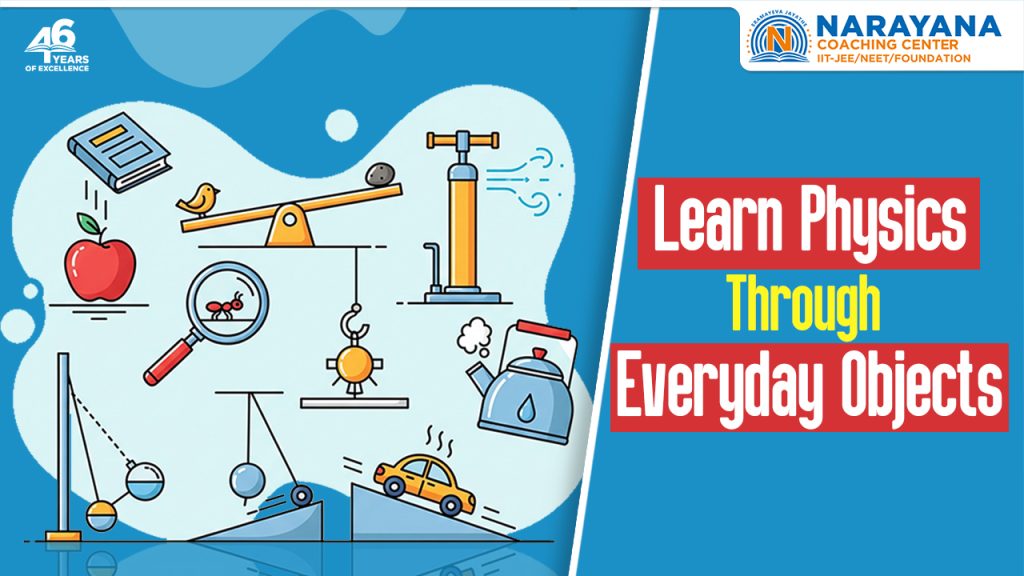
An Easy & Fun Way for Children to Discover the Magic of Physics Around Them!
Physics is often seen as a subject filled with complex equations, heavy textbooks, and strange symbols. But what if you could learn physics just by observing and playing with the objects around you every day? From a bouncing ball to a microwave, physics is all around you, waiting to be discovered!
Let’s take a fun tour through your home and see how to become a young physicist without even opening a textbook.
🎾 1. The Magic of Bouncing Balls – Newton’s Laws in Action
Have you ever bounced a ball and noticed how it rebounds after hitting the floor?
That’s Newton’s Third Law of Motion: For every action, there is an equal and opposite reaction.
- When you throw the ball down, your hand applies force (action).
- The ground pushes back with an equal force (reaction), causing the ball to bounce.
Try using balls made of different materials (rubber, plastic, or sponge) and observe how they bounce differently. You’re conducting a physics experiment!
Physics concepts: Forces, Newton’s Laws, energy transfer
🍳 2. Cooking in the Kitchen – Heat and Thermodynamics
Cooking is not just tasty—it’s science!
- When you boil water, you observe a phase change: water changes from a liquid to a gas (steam).
- Microwaves use electromagnetic waves to heat food by causing water molecules to vibrate.
Try simple experiments like melting butter at different heat levels to understand heat transfer and thermal conductivity.
Physics concepts: Heat transfer, states of matter, energy conversion
🚲 3. Riding a Bicycle – Balance, Motion, and Friction
The next time you ride a bicycle, think about all the forces at play.
- Gravity pulls you downward.
- Friction between the tyres and the road helps you stop.
- Inertia keeps you moving until you apply the brakes.
Even maintaining your balance involves physics—your body instinctively adjusts to stay upright, thanks to your understanding of centre of mass and angular momentum.
Physics concepts: Force, friction, inertia, rotational motion
🌬️ 4. Blowing Balloons – Air Pressure and Elasticity
Blow up a balloon and let it go—what happens?
It flies around, spinning in funny directions. That’s because of the air pressure escaping and propelling the balloon forward.
As the balloon fills, it stretches, showing the elastic limit of rubber.
You can even measure how far a balloon travels when released in different directions—making your own mini rocket experiment.
Physics concepts: Air pressure, force, elasticity, motion
💡 5. Turning on the Lights – Electricity at Your Fingertips
When you flip a light switch, the circuit completes, allowing electricity to flow and power the bulb.
- The electricity comes from a power source.
- The wires conduct the current.
- The bulb converts electrical energy into light and heat.
Try building a simple circuit using a battery, wire, and a small bulb. With supervision, it’s safe and helps you understand how electric circuits work.
Physics concepts: Electric current, circuits, conductors and insulators
🧲 6. Playing with Magnets – Invisible Forces at Work
Magnets seem magical! Try using a magnet to move a paperclip without touching it. That’s magnetic force in action.
- Opposite poles attract.
- Like poles repel.
This simple activity helps you explore magnetic fields and how they influence materials. You can also test which materials are magnetic and which are not.
Physics concepts: Magnetism, force fields, material properties
🧼 7. Soap Bubbles – Surface Tension and Light
Have you ever noticed how soap bubbles shine with rainbow colours?
- The thin film of soap and water creates surface tension, which holds the bubble together.
- Light reflects off the layers and creates different colours through
Blow bubbles of different sizes and try capturing them on surfaces to observe their shapes and reflections.
Physics concepts: Surface tension, light reflection, interference
✅ Why Learning Physics This Way Works
When you learn by seeing, touching, and experimenting, your brain engages both curiosity and memory. These hands-on experiences help you understand:
- Cause and effect
- Scientific reasoning
- Everyday applications of science
Instead of memorising definitions, you’re experiencing them.
👩🔬 Try This at Home – A Five-Day Physics Challenge!
Want to become a junior physicist? Try this simple challenge using everyday objects around your home:
| Day | Activity | Physics Concept |
| 1 | Bounce different balls | Newton’s Laws |
| 2 | Boil water and observe steam | Heat & Phase Change |
| 3 | Ride your bike and sketch forces | Motion & Friction |
| 4 | Make a balloon rocket | Pressure & Force |
| 5 | Build a simple circuit | Electricity |
📚 Conclusion: Physics Is Everywhere!
Learning physics doesn’t require a lab coat or blackboard—just a curious mind and a willingness to observe. The next time you pick up a toy, open a fridge, or ride down the street—remember, physics is all around you.
So go ahead, explore the world. You’re already a physicist in the making!
📌 Parent/Teacher Tip:
Encourage children to ask “why” more often. Every “why” is the beginning of a great physics lesson!
